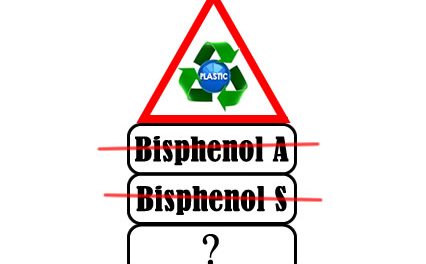Millions are helplessly addicted to tobacco, unaware that a natural aid for smoking cessation can be found not at the local pharmacy, but at your grocer’s fruit stand.
Compelling reasons to stop smoking far outnumber effective ways to do so. Even with recent revelations that tobacco is contaminated with the highly carcinogenic radioisotope polonium-210, the addictive hold it maintains on millions of smokers worldwide who already know it causes premature death and cancer is far more powerful than the desire for self-preservation, it would seem.
This is why effective, natural interventions for smoking cessation are so needed today and why we are excited to report on a new study involving a solution that can be found not at your local pharmacy, but at your local grocer’s fruit stand.
RELATED ARTICLES:
In a new study published in the Journal of the Medical Association of Thailand titled, “Efficacy of fresh lime for smoking cessation,”[i] researchers from the Department of Medicine, Srinakharinwirot University, Thailand tested the effectiveness of fresh lime as a smoking cessation aid compared with nicotine gum.
100 regular smokers aged 18 or older who were willing to quit were entered into a six-month long randomized, controlled trial, receiving either fresh lime (47) or nicotine gum (53) over the course of the study. Smoking reduction was confirmed through measuring exhaled carbon monoxide (CO), with measurements at weeks 9-12 being the primary outcome. Severity of craving was also measured using a visual analogue scale.
The results of the trial showed that there was no significant difference in abstinence rates between the groups during weeks 9-12, although they did observe that “7-day point prevalence abstinence at week 4 of the fresh lime users was statistically significant lower than those using nicotine gum (38.3% vs. 58.5%; p = 0.04). They also found fresh lime users tended to report more intense cravings than the nicotine gum group, but the number of cravings were found not to differ significantly between the groups.
The report concluded, “Fresh lime can be used effectively as a smoking cessation aid, although not as good as nicotine gum in reducing cravings.”‘

Lime, of course, is an easily accessible and non-toxic alternative to nicotine gum, and physiologically has a number of ‘side benefits,’ including alkalinizing the tissues, which are normally more acidic in tobacco users to begin with. It is also an anti-infective agent, having been demonstrated to have significant antimicrobial activity against multiple strains of drug resistant E. coli,[ii] and inhibiting the survival of Vibrio cholera, the pathogen that contributes to cholera, in foods;[iii] another nice ‘side benefit’ considering smokers often have compromised immunity.
RELATED ARTICLE:
Additional evidence-based natural aids for smoking cessation include:
- Acupunture: Acupuncture treatment ameliorated the smoking withdrawal symptoms as well as the selective attention to smoking-related visual cues in smokers. [iv]
- Exercise: Five minutes of moderate intensity exercise is associated with a short-term reduction in desire to smoke and tobacco withdrawal symptoms.[v] [vi]
- Hypnosis: Hypnosis combined with nicotine patches compares favorably to standard behavioral counseling for smoking cessation.[vii] In a meta-analysis of 59 studies hypnosis was judged to be partially efficacious in the treatment of smoking cessation.[viii]
- Black Pepper: Inhalation of vapor from black pepper reduces smoking withdrawal symptoms.[ix]
- Mindfulness: Mindfulness-based interventions reduce the urge to smoke in college student smokers.[x]
- Self-Massage: Smoking cravings are reduced by self-massage.[xi]
- Rhodiola rosea: Rhodiola rosea has a therapeutic effect in the treatment of smoking cessation.[xii]
- St. John’s Wort: There is preclinical evidence that St. John’s wort is therapeutic in nicotine addiction.[xiii] [xiv] [Note: St. John’s wort can interact with a wide range of medications, and should be used under the guidance of a licensed health professional]
[i] Suthat Rungruanghiranya, Chatchai Ekpanyaskul, Chanin Sakulisariyaporn, Prapada Watcharanat, Kunyanit Akkalakulawas. Efficacy of fresh lime for smoking cessation. J Med Assoc Thai. 2012 Dec ;95 Suppl 12:S76-82. PMID: 23513469
[ii] Shahedur Rahman, Anowar Khasru Parvez, Rezuanul Islam, Mahboob Hossain Khan. Antibacterial activity of natural spices on multiple drug resistant Escherichia coli isolated from drinking water, Bangladesh. Ann Clin Microbiol Antimicrob. 2011;10:10. Epub 2011 Mar 15. PMID:21406097
[iii] A Rodrigues, A Sandström, T Cá, H Steinsland, H Jensen, P Aaby. Protection from cholera by adding lime juice to food – results from community and laboratory studies in Guinea-Bissau, West Africa. Trop Med Int Health. 2000 Jun;5(6):418-22. PMID: 10929141
[iv] Younbyoung Chae, O-Seok Kang, Hwa-Jin Lee, Song-Yi Kim, Hyejung Lee, Hun-Kuk Park, Jong-Soo Yang, Hi-Joon Park. Effect of acupuncture on selective attention for smoking-related visual cues in smokers. Neurol Res. 2010 Feb;32 Suppl 1:27-30. PMID: 20034441
[v] James Daniel, Mark Cropley, Michael Ussher, Robert West. Acute effects of a short bout of moderate versus light intensity exercise versus inactivity on tobacco withdrawal symptoms in sedentary smokers. Psychopharmacology (Berl). 2004 Jul;174(3):320-6. Epub 2004 Mar 2. PMID: 14997270
[vi] Judith J Prochaska, Sharon M Hall, Gary Humfleet, Ricardo F Munoz, Victor Reus, Julie Gorecki, Dixie Hu. Physical activity as a strategy for maintaining tobacco abstinence: a randomized trial.Prev Med. 2008 Aug;47(2):215-20. Epub 2008 May 16. PMID: 18572233
[vii] Timothy P Carmody, Carol Duncan, Joel A Simon, Sharon Solkowitz, Joy Huggins, Sharon Lee, Kevin Delucchi. Hypnosis for smoking cessation: a randomized trial. Nicotine Tob Res. 2008 May;10(5):811-8. PMID: 18569754
[viii] J P Green, S J Lynn. Hypnosis and suggestion-based approaches to smoking cessation: an examination of the evidence. Int J Clin Exp Hypn. 2000 Apr;48(2):195-224. PMID: 10769984
[ix] J E Rose, F M Behm. Inhalation of vapor from black pepper extract reduces smoking withdrawal symptoms. Drug Alcohol Depend. 1994 Feb;34(3):225-9. PMID: 8033760
[x] Sarah Bowen, Alan Marlatt. Surfing the urge: brief mindfulness-based intervention for college student smokers. Psychol Addict Behav. 2009 Dec;23(4):666-71. PMID: 20025372
[xi] M Hernandez-Reif, T Field, S Hart. Smoking cravings are reduced by self-massage. Prev Med. 1999 Jan;28(1):28-32. PMID: 9973585
[xii] Laura Mattioli, Marina Perfumi. Evaluation of Rhodiola rosea L. extract on affective and physical signs of nicotine withdrawal in mice. Swed Dent J. 2006;30(2):55-60. PMID:19939867
[xiii] C Ruedeberg, U N Wiesmann, A Brattstroem, U E Honegger. Hypericum perforatum L. (St John’s wort) extract Ze 117 inhibits dopamine re-uptake in rat striatal brain slices. An implication for use in smoking cessation treatment? Phytother Res. 2009 Jul 7. PMID: 19585471
[xiv] Maria A Catania, Fabio Firenzuoli, Anna Crupi, Carmen Mannucci, Achille P Caputi, Gioacchino Calapai. Hypericum perforatum attenuates nicotine withdrawal signs in mice.Psychopharmacology (Berl). 2003 Sep;169(2):186-9. Epub 2003 Apr 29. PMID: 12719964
*Article originally appeared at Green Med Info.












